56 items found
Page 1 of 1
-

Pair of twentieth century giltwood cornucopia
£600 -

Paradisi in Sole Paradisus Terrestris by John Parkinson (1567-1650)
£350 eachParadisi in Sole Paradisus Terrestris by John Parkinson (1567-1650)
John Parkinson, born c1566, started his working life in medicine, beginning his apprenticeship to a London apothecary. He went on to become one of the most respected apothecaries in Britain. He was elected junior warden of the Society of Apothecaries in August 1620 but at the beginning of 1622, he asked for, and was granted, permission to give up his duties in the Society and then concentrated on his garden in London's Long Acre. Here he started researching and writing his first book: Paradisi in sole paradisus terrestris, and maintained close relations with other important English and Continental botanists, herbalists and plantsmen.£350 each -

Paradisi in Sole Paradisus Terrestris by John Parkinson (1567-1650)
£350 eachParadisi in Sole Paradisus Terrestris by John Parkinson (1567-1650)
John Parkinson, born c1566, started his working life in medicine, beginning his apprenticeship to a London apothecary. He went on to become one of the most respected apothecaries in Britain. He was elected junior warden of the Society of Apothecaries in August 1620 but at the beginning of 1622, he asked for, and was granted, permission to give up his duties in the Society and then concentrated on his garden in London's Long Acre. Here he started researching and writing his first book: Paradisi in sole paradisus terrestris, and maintained close relations with other important English and Continental botanists, herbalists and plantsmen.£350 each -

Paradisi in Sole Paradisus Terrestris by John Parkinson (1567-1650)
£350 eachParadisi in Sole Paradisus Terrestris by John Parkinson (1567-1650)
John Parkinson, born c1566, started his working life in medicine, beginning his apprenticeship to a London apothecary. He went on to become one of the most respected apothecaries in Britain. He was elected junior warden of the Society of Apothecaries in August 1620 but at the beginning of 1622, he asked for, and was granted, permission to give up his duties in the Society and then concentrated on his garden in London's Long Acre. Here he started researching and writing his first book: Paradisi in sole paradisus terrestris, and maintained close relations with other important English and Continental botanists, herbalists and plantsmen.£350 each -

Fruit Growers Guide – Portugal Quince, Durondeau, Van Mons Leon le Clerc, Gansel’s Bergamot,
£220 EachFruit Growers Guide – Portugal Quince, Durondeau, Van Mons Leon le Clerc, Gansel’s Bergamot,
Published by John Wright in 1894.£220 Each -

Fruit Growers Guide – Nouvelle Fulvie, Easter Beurré, Olivier de Serres,
£220 EachFruit Growers Guide – Nouvelle Fulvie, Easter Beurré, Olivier de Serres,
Published by John Wright in 1894.£220 Each -
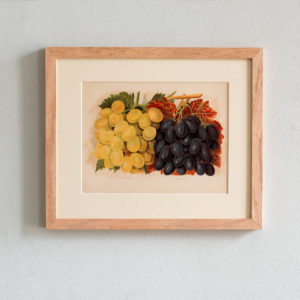
Fruit Growers Guide – Muscat of Alexandria, Madresfield Court,
£220 EachFruit Growers Guide – Muscat of Alexandria, Madresfield Court,
Published by John Wright in 1894.£220 Each -

Fruit Growers Guide – Gascoigne’s Seedling, Sandringham,
£220 EachFruit Growers Guide – Gascoigne’s Seedling, Sandringham,
Published by John Wright in 1894.£220 Each -

Fruit Growers Guide – Doyenné du Comice, Beurré Superfin, Souvenir du Congrès,
£220 EachFruit Growers Guide – Doyenné du Comice, Beurré Superfin, Souvenir du Congrès,
Published by John Wright in 1894.£220 Each -

Fruit Growers Guide – Milton, Goldoni, Victoria, Newton, Stanwick Elruge,
£220 EachFruit Growers Guide – Milton, Goldoni, Victoria, Newton, Stanwick Elruge,
Published by John Wright in 1894.£220 Each -

Fruit Growers Guide – Tom Putt, Wealthy, Queen Caroline,
£220 EachFruit Growers Guide – Tom Putt, Wealthy, Queen Caroline,
Published by John Wright in 1894.£220 Each -

Fruit Growers Guide – Green Gage, Red Warrington, Red Champagne, Yellow Champagne, White Smith, Pitmaston Green Gage,
£220 EachFruit Growers Guide – Green Gage, Red Warrington, Red Champagne, Yellow Champagne, White Smith, Pitmaston Green Gage,
Published by John Wright in 1894.£220 Each -

Fruit Growers Guide – Duke of Buccleuch, Gros Colman, Lady Downe’s Seedling,
£220 EachFruit Growers Guide – Duke of Buccleuch, Gros Colman, Lady Downe’s Seedling,
Published by John Wright in 1894.£220 Each -

The Apples of New York, 1905
£140The Apples of New York, 1905
The Apples of New York, published in 1905 summed up over two decades of horticultural research providing an insight into the varieties available to the consumer prior to the industralised farming of the 20th century.£140 -

The Apples of New York, 1905
£140The Apples of New York, 1905
The Apples of New York, published in 1905 summed up over two decades of horticultural research providing an insight into the varieties available to the consumer prior to the industralised farming of the 20th century.£140 -

The Apples of New York, 1905
£140The Apples of New York, 1905
The Apples of New York, published in 1905 summed up over two decades of horticultural research providing an insight into the varieties available to the consumer prior to the industralised farming of the 20th century.£140 -

The Apples of New York, 1905
£140The Apples of New York, 1905
The Apples of New York, published in 1905 summed up over two decades of horticultural research providing an insight into the varieties available to the consumer prior to the industralised farming of the 20th century.£140 -

The Apples of New York, 1905
£140The Apples of New York, 1905
The Apples of New York, published in 1905 summed up over two decades of horticultural research providing an insight into the varieties available to the consumer prior to the industralised farming of the 20th century.£140 -

The Apples of New York, 1905
£140The Apples of New York, 1905
The Apples of New York, published in 1905 summed up over two decades of horticultural research providing an insight into the varieties available to the consumer prior to the industralised farming of the 20th century.£140 -

The Apples of New York, 1905
£140The Apples of New York, 1905
The Apples of New York, published in 1905 summed up over two decades of horticultural research providing an insight into the varieties available to the consumer prior to the industralised farming of the 20th century.£140 -

The Apples of New York, 1905
£140The Apples of New York, 1905
The Apples of New York, published in 1905 summed up over two decades of horticultural research providing an insight into the varieties available to the consumer prior to the industralised farming of the 20th century.£140 -

The Apples of New York, 1905
£140The Apples of New York, 1905
The Apples of New York, published in 1905 summed up over two decades of horticultural research providing an insight into the varieties available to the consumer prior to the industralised farming of the 20th century.£140 -

The Apples of New York, 1905
£140The Apples of New York, 1905
The Apples of New York, published in 1905 summed up over two decades of horticultural research providing an insight into the varieties available to the consumer prior to the industralised farming of the 20th century.£140 -

The Apples of New York, 1905
£140The Apples of New York, 1905
The Apples of New York, published in 1905 summed up over two decades of horticultural research providing an insight into the varieties available to the consumer prior to the industralised farming of the 20th century.£140 -

The Apples of New York, 1905
£140The Apples of New York, 1905
The Apples of New York, published in 1905 summed up over two decades of horticultural research providing an insight into the varieties available to the consumer prior to the industralised farming of the 20th century.£140 -

The Apples of New York, 1905
£140The Apples of New York, 1905
The Apples of New York, published in 1905 summed up over two decades of horticultural research providing an insight into the varieties available to the consumer prior to the industralised farming of the 20th century.£140 -

The Apples of New York, 1905
£140The Apples of New York, 1905
The Apples of New York, published in 1905 summed up over two decades of horticultural research providing an insight into the varieties available to the consumer prior to the industralised farming of the 20th century.£140 -
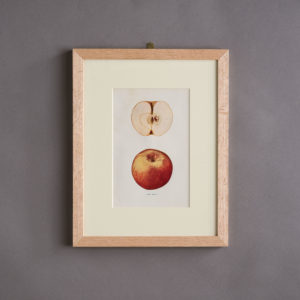
The Apples of New York, 1905
£140The Apples of New York, 1905
The Apples of New York, published in 1905 summed up over two decades of horticultural research providing an insight into the varieties available to the consumer prior to the industralised farming of the 20th century.£140 -

The Apples of New York, 1905
£140The Apples of New York, 1905
The Apples of New York, published in 1905 summed up over two decades of horticultural research providing an insight into the varieties available to the consumer prior to the industralised farming of the 20th century.£140 -

The Apples of New York, 1905
£140The Apples of New York, 1905
The Apples of New York, published in 1905 summed up over two decades of horticultural research providing an insight into the varieties available to the consumer prior to the industralised farming of the 20th century.£140 -

The Profitable Farm and Garden 1902,
£140The Profitable Farm and Garden 1902,
Published in 1902 by W.H & L. Collingbridge, of London. Framed in natural ash. Two Good Market Damsons - The Shropshire, and Frogmore Prolific.£140 -
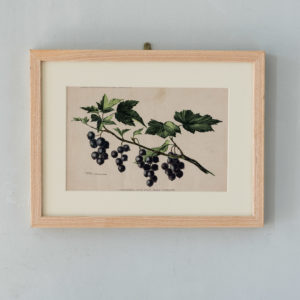
The Profitable Farm and Garden 1902,
£140The Profitable Farm and Garden 1902,
Published in 1902 by W.H & L. Collingbridge, of London. Framed in natural ash. Black Currants.£140 -

The Profitable Farm and Garden 1902,
£140The Profitable Farm and Garden 1902,
Published in 1902 by W.H & L. Collingbridge, of London. Framed in natural ash. The Hollow Crown Parsnip.£140 -

Alpine Flowers
£110 eachAlpine Flowers
Anton Hartinger was an Austrian artist who specialized in still life paintings of fruit and flowers. He was born in Vienna in 1806 and a member of the Academy of Fine Arts Vienna from 1843 to 1851. He later became a pioneer in the field of chromolithographic printing. He died in Vienna in 1890.£110 each -

Alpine Flowers
£110 eachAlpine Flowers
Anton Hartinger was an Austrian artist who specialized in still life paintings of fruit and flowers. He was born in Vienna in 1806 and a member of the Academy of Fine Arts Vienna from 1843 to 1851. He later became a pioneer in the field of chromolithographic printing. He died in Vienna in 1890.£110 each -

Alpine Flowers
£110 eachAlpine Flowers
Anton Hartinger was an Austrian artist who specialized in still life paintings of fruit and flowers. He was born in Vienna in 1806 and a member of the Academy of Fine Arts Vienna from 1843 to 1851. He later became a pioneer in the field of chromolithographic printing. He died in Vienna in 1890.£110 each -

Alpine Flowers
£110 eachAlpine Flowers
Anton Hartinger was an Austrian artist who specialized in still life paintings of fruit and flowers. He was born in Vienna in 1806 and a member of the Academy of Fine Arts Vienna from 1843 to 1851. He later became a pioneer in the field of chromolithographic printing. He died in Vienna in 1890.£110 each -

Alpine Flowers
£110 eachAlpine Flowers
Anton Hartinger was an Austrian artist who specialized in still life paintings of fruit and flowers. He was born in Vienna in 1806 and a member of the Academy of Fine Arts Vienna from 1843 to 1851. He later became a pioneer in the field of chromolithographic printing. He died in Vienna in 1890.£110 each -

Alpine Flowers
£110 eachAlpine Flowers
Anton Hartinger was an Austrian artist who specialized in still life paintings of fruit and flowers. He was born in Vienna in 1806 and a member of the Academy of Fine Arts Vienna from 1843 to 1851. He later became a pioneer in the field of chromolithographic printing. He died in Vienna in 1890.£110 each -

Alpine Flowers
£110 eachAlpine Flowers
Anton Hartinger was an Austrian artist who specialized in still life paintings of fruit and flowers. He was born in Vienna in 1806 and a member of the Academy of Fine Arts Vienna from 1843 to 1851. He later became a pioneer in the field of chromolithographic printing. He died in Vienna in 1890.£110 each -

Alpine Flowers
£110 eachAlpine Flowers
Anton Hartinger was an Austrian artist who specialized in still life paintings of fruit and flowers. He was born in Vienna in 1806 and a member of the Academy of Fine Arts Vienna from 1843 to 1851. He later became a pioneer in the field of chromolithographic printing. He died in Vienna in 1890.£110 each -

Alpine Flowers
£110 eachAlpine Flowers
Anton Hartinger was an Austrian artist who specialized in still life paintings of fruit and flowers. He was born in Vienna in 1806 and a member of the Academy of Fine Arts Vienna from 1843 to 1851. He later became a pioneer in the field of chromolithographic printing. He died in Vienna in 1890.£110 each -
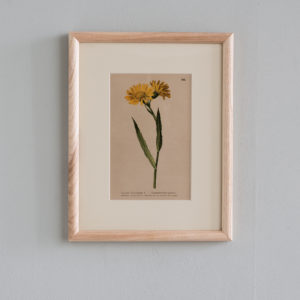
Alpine Flowers
£110 eachAlpine Flowers
Anton Hartinger was an Austrian artist who specialized in still life paintings of fruit and flowers. He was born in Vienna in 1806 and a member of the Academy of Fine Arts Vienna from 1843 to 1851. He later became a pioneer in the field of chromolithographic printing. He died in Vienna in 1890.£110 each -

Alpine Flowers
£110 eachAlpine Flowers
Anton Hartinger was an Austrian artist who specialized in still life paintings of fruit and flowers. He was born in Vienna in 1806 and a member of the Academy of Fine Arts Vienna from 1843 to 1851. He later became a pioneer in the field of chromolithographic printing. He died in Vienna in 1890.£110 each -

Alpine Flowers
£110 eachAlpine Flowers
Anton Hartinger was an Austrian artist who specialized in still life paintings of fruit and flowers. He was born in Vienna in 1806 and a member of the Academy of Fine Arts Vienna from 1843 to 1851. He later became a pioneer in the field of chromolithographic printing. He died in Vienna in 1890.£110 each -

Alpine Flowers
£110 eachAlpine Flowers
Anton Hartinger was an Austrian artist who specialized in still life paintings of fruit and flowers. He was born in Vienna in 1806 and a member of the Academy of Fine Arts Vienna from 1843 to 1851. He later became a pioneer in the field of chromolithographic printing. He died in Vienna in 1890.£110 each -

Alpine Flowers
£110 eachAlpine Flowers
Anton Hartinger was an Austrian artist who specialized in still life paintings of fruit and flowers. He was born in Vienna in 1806 and a member of the Academy of Fine Arts Vienna from 1843 to 1851. He later became a pioneer in the field of chromolithographic printing. He died in Vienna in 1890.£110 each -

Alpine Flowers
£110 eachAlpine Flowers
Anton Hartinger was an Austrian artist who specialized in still life paintings of fruit and flowers. He was born in Vienna in 1806 and a member of the Academy of Fine Arts Vienna from 1843 to 1851. He later became a pioneer in the field of chromolithographic printing. He died in Vienna in 1890.£110 each -

Alpine Flowers
£110 eachAlpine Flowers
Anton Hartinger was an Austrian artist who specialized in still life paintings of fruit and flowers. He was born in Vienna in 1806 and a member of the Academy of Fine Arts Vienna from 1843 to 1851. He later became a pioneer in the field of chromolithographic printing. He died in Vienna in 1890.£110 each -

Alpine Flowers
£110 eachAlpine Flowers
Anton Hartinger was an Austrian artist who specialized in still life paintings of fruit and flowers. He was born in Vienna in 1806 and a member of the Academy of Fine Arts Vienna from 1843 to 1851. He later became a pioneer in the field of chromolithographic printing. He died in Vienna in 1890.£110 each -
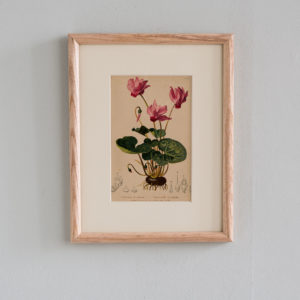
Alpine Flowers
£110 eachAlpine Flowers
Anton Hartinger was an Austrian artist who specialized in still life paintings of fruit and flowers. He was born in Vienna in 1806 and a member of the Academy of Fine Arts Vienna from 1843 to 1851. He later became a pioneer in the field of chromolithographic printing. He died in Vienna in 1890.£110 each -

Alpine Flowers
£110 eachAlpine Flowers
Anton Hartinger was an Austrian artist who specialized in still life paintings of fruit and flowers. He was born in Vienna in 1806 and a member of the Academy of Fine Arts Vienna from 1843 to 1851. He later became a pioneer in the field of chromolithographic printing. He died in Vienna in 1890.£110 each -

Alpine Flowers
£110 eachAlpine Flowers
Anton Hartinger was an Austrian artist who specialized in still life paintings of fruit and flowers. He was born in Vienna in 1806 and a member of the Academy of Fine Arts Vienna from 1843 to 1851. He later became a pioneer in the field of chromolithographic printing. He died in Vienna in 1890.£110 each -
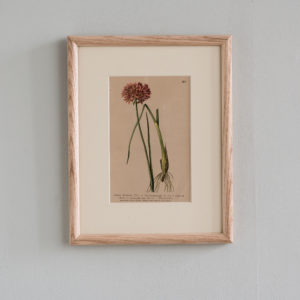
Alpine Flowers
£110 eachAlpine Flowers
Anton Hartinger was an Austrian artist who specialized in still life paintings of fruit and flowers. He was born in Vienna in 1806 and a member of the Academy of Fine Arts Vienna from 1843 to 1851. He later became a pioneer in the field of chromolithographic printing. He died in Vienna in 1890.£110 each -

Alpine Flowers
£110 eachAlpine Flowers
Anton Hartinger was an Austrian artist who specialized in still life paintings of fruit and flowers. He was born in Vienna in 1806 and a member of the Academy of Fine Arts Vienna from 1843 to 1851. He later became a pioneer in the field of chromolithographic printing. He died in Vienna in 1890.£110 each -
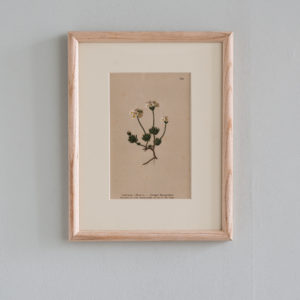
Alpine Flowers
£110 eachAlpine Flowers
Anton Hartinger was an Austrian artist who specialized in still life paintings of fruit and flowers. He was born in Vienna in 1806 and a member of the Academy of Fine Arts Vienna from 1843 to 1851. He later became a pioneer in the field of chromolithographic printing. He died in Vienna in 1890.£110 each
Featured Items
-

Portrait Fragment by Pierre Bonnard, Verve Vol 2 / No. 5-6.
£600Portrait Fragment by Pierre Bonnard, Verve Vol 2 / No. 5-6.
The Verve Review was a purposefully luxurious. It ran from 1937 to 1960, but with only 38 editions available, due to the high degree of design and editorial work dedicated to each issue. Each edition contained unique lithographic prints, commissioned by the editor, and each cover a double-page lithograph elaborated by one of the artists contained within. It was the brainchild of its editor Stratis Eleftheriades, a Greek National who moved to Paris in the early thirties to take part in the growing Modernist movement, writing under the name of Teriade.£600 -

Stars by Wassily Kandinsky, Verve Vol. 1 / No. 2.
£800Stars by Wassily Kandinsky, Verve Vol. 1 / No. 2.
The Verve Review was a purposefully luxurious. It ran from 1937 to 1960, but with only 38 editions available, due to the high degree of design and editorial work dedicated to each issue. Each edition contained unique lithographic prints, commissioned by the editor, and each cover a double-page lithograph elaborated by one of the artists contained within. It was the brainchild of its editor Stratis Eleftheriades, a Greek National who moved to Paris in the early thirties to take part in the growing Modernist movement, writing under the name of Teriade.£800 -

Henri Matisse, ‘The Last Works of Henri Matisse’
£900 eachHenri Matisse, ‘The Last Works of Henri Matisse’
From Verve Vol. IX No. 35/36 published by Tériade under the title 'The Last Works of Henri Matisse'£900 each -

Printemps by Marc Chagall, Verve Vol. 1 / No. 3.
£800Printemps by Marc Chagall, Verve Vol. 1 / No. 3.
The Verve Review was a purposefully luxurious. It ran from 1937 to 1960, but with only 38 editions available, due to the high degree of design and editorial work dedicated to each issue. Each edition contained unique lithographic prints, commissioned by the editor, and each cover a double-page lithograph elaborated by one of the artists contained within. It was the brainchild of its editor Stratis Eleftheriades, a Greek National who moved to Paris in the early thirties to take part in the growing Modernist movement, writing under the name of Teriade.£800
